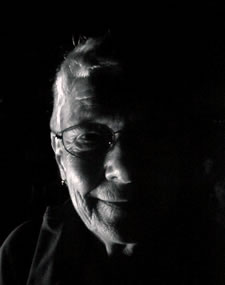 |
Dharma Gleaningsbycynthia rich
|

|
August 13, 2016—August 26, 2016
August 13, 2016
Practice is learning what it means to be a human being.
August 14, 2016
To know the First Noble Truth is to know that pain is to be expected, it is intrinsic to human existence. We can grieve when we encounter suffering in our
lives or in the world, however we should never be surprised.
August 15, 2016
When we reverse our notions of what is ordinary, and allow ourselves to recognize that suffering is in reality
the norm of human existence, what sounds like a depressing realization becomes an unexpected gift that enriches our lives. Instead of continually being surprised, profoundly disappointed, or just annoyed by how much daily suffering we must endure (it’s too hot, it’s too cold, this chair is uncomfortable, that phone call was insulting, my throat is sore, the leaf cutter is deafening, my cat is sick, I lost the contract, the traffic isn’t moving, I can’t pay the rent, he didn’t answer my text message, the Arctic ice is melting, my haircut is ugly, my partner is dying, my pants are too tight, there’s too much salt in the soup), instead of experiencing suffering as a stressful disruption of our lives, something “wrong” or even shocking, we can—without attachment—find wonderful delight, a deep joy, a profound gratitude in moments that are relatively free of those pains or stresses—we can, as Thich Nhat Hanh said, appreciate not having a toothache.
August 16, 2016
In Pure and Simple, Upasika Kee makes clear the nature of the aggregates and how they operate in our lives.
For some time I’ve practiced with the awareness that our body is like a hotel room or—the image I’ve preferred (April 15, 2008)—like a suit of clothes that we can’t change and that over time, however much we try to keep it looking nice and later just respectable, gradually becomes stained and wrinkled and eventually wears out altogether. We have a body, however the body is not us.
Upasika Kee reminds us that when the eye sees something, it’s the eye seeing something, “we” aren’t seeing something.
Reading this, I came back to the body as a hotel room and the image worked for this understanding. It’s so clear: If we are staying in a hotel and some heavy trucks go by so that the windows are shaking, we don’t think “we” are shaking.
If the eye of this body is seeing something, that doesn’t mean that we are seeing something.
August 20, 2016
We may believe that thinking protects us—that it prepares us for what is next, helps us to remember something that might possibly be useful later. So we keep it busy 24/7, as if more must always be better. Until we experience it, we can’t know how silencing the monkey mind gives us greater clarity of thought when we need to think, helps us to respond with more discernment, less muddle.
It’s rather as if we believed that not sleeping would protect us, that by staying awake we can continuously prepare for what’s next, and have a chance to remember things that might be useful later. Deprived of sleep, we might not realize how much clearer and more effective our mind could be if we allowed it to rest.
August 26, 2016
In those moments when we have nothing specific that we are thinking about, we may notice that our mind is circling like a hawk in the air looking for a good thought to land on. These are moments when we can stop and loosen our attachment to thinking. We can decide in such a moment to stay spreading our wings in the spacious sky of our minds without constantly searching for prey, which will probably be old, rotten, diseased with delusion.